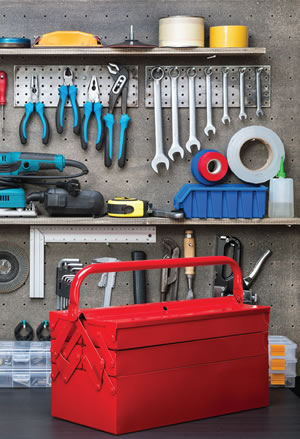U.S. Public School Facilities In Trouble

PHOTO © DONATAS1205
“We estimate that the nation should be spending about $145 billion per year to maintain, operate and renew (K-12 public
school) facilities so that they provide healthy and safe 21st-century
learning environments for all children.” That statement comes from
the executive summary of “The State of Our Schools: America’s
K-12 Facilities” report, released March 23 by the Center for Green
Schools at the U.S. Green Building Council (USGBC), the 21st
Century School Fund and the National Council on School Facilities.
The report goes on to say that the current national expenditures are
$99 billion, leaving a $46 billion gap, which “leaves school districts
unprepared to provide adequate and equitable
school facilities.”
The report goes into a little more detail
about that gap saying, “Comparing historic
spending against building industry and bestpractice
standards for responsible facilities
stewardship, we estimate that national spending
falls short by about $8 billion for M&O (maintenance and
operations) and $38 billion for capital construction.”
According to a USGBC release, Rick Fedrizzi, CEO and founding
chair, USGBC says, “One out of every six people in the U.S. spends
each day in a K-12 public school classroom, yet there is very little
oversight over America’s public school buildings. It is totally unacceptable
that there are millions of students across the country who
are learning in dilapidated, obsolete and unhealthy facilities that
pose obstacles to their learning and overall well-being. U.S. public
school infrastructure is funded through a system that is inequitably
affecting our nation’s students, and this has to change.”
The Executive Summary opens with the statement, “A large and
growing body of evidence demonstrates that school facilities have
a direct impact on student learning, student and staff health, and
school finances. But too many students attend school facilities that
fall short of providing 21st-century learning environments because
essential maintenance and capital improvements are underfunded.”
The report says that its findings show the federal government
provides almost no capital construction funding for school facilities,
and state support varies widely. It says that local school districts
bear the heaviest burden in making the investments needed. “When
school districts cannot afford to make these significant investments,
they are often forced to make more frequent building repairs from
their operating funds — the same budget that pays for teacher salaries,
instructional materials and general programming.”
Findings indicate that only three states,
Texas, Florida and Georgia, have average
spending levels that meet or exceed the standards
for investment. Six states (Massachusetts,
Wyoming, Connecticut, Ohio, Kentucky
and Hawaii) pay for all or nearly all of the
capital construction costs for their schools,
while 12 states (Idaho, Indiana, Louisiana, Michigan, Missouri,
Nebraska, Nevada, Oklahoma, Oregon, South Dakota, Tennessee and
Wisconsin) provide no direct support to districts for capital construction
responsibilities. Spending levels in the remaining 32 states
vary greatly, and the federal government contributes almost nothing
to capital construction to help alleviate disparities.
That being said, the report does not point fingers or place
blame. In fact, it says the findings show that, on average, “state and
local governments invest more capital in K-12 public school facilities
than in any other infrastructure sector outside of highways.”
It also says that, “School districts worked hard from 1994 through
2013 to operate, maintain, modernize and meet the enrollment
growth of the nation’s K-12 public schools. In the span of these 20
years, school facilities changed more rapidly than at any time in
recent memory, fueled by improved health and safety standards,
stronger accessibility requirements, increased use of technology
and expanded programming within schools.
The report features an in-depth, state-by-state analysis of
investment in school infrastructure and focuses on 20 years
(1994 to 2013) of school facility investment nationwide, as well as
funding needed moving forward to make up for annual investment
shortfalls for essential repairs and upgrades. The report
also proposes recommendations for investments, innovations
and reforms to improve learning environments for children in all
U.S. public schools.
The report identifies four key strategies for addressing the
structural deficits in the K-12 public education infrastructure. “First, understand current facilities conditions.
Second, engage communities in
planning for adequate and equitable 21stcentury
facilities. Third, find and pilot new
innovative sources of public funding. Finally,
leverage public and private resources
in new ways to assist states and districts in
providing healthy, safe, educationally appropriate,
and environmentally responsible
facilities for their communities.”
On a more positive note, the report
says that the research indicates, “The
American public supports high-quality
school facilities. When communities have
the means to build and maintain high-quality
facilities, they do.”
STANDARDS FOR MAINTAINING AND UPGRADING CURRENT K–12 PUBLIC SCHOOL FACILITIES
Proposed national standards for maintaining school facilities refer to the
percentage of facilities’ current replacement value that should be invested annually to
maintain school buildings in good condition in order to be able to deliver healthy, safe,
educationally appropriate, and environmentally sustainable school facilities.
- 3 Percent — Annual M&O — Cleaning, grounds keeping, routine and preventive
maintenance, minor repairs, utilities and security.
- 2 Percent — Periodic renewals — Replacement of key components that wear out, roofs,
windows, doors, boilers, etc.
- 1 Percent — As-Needed Alterations — Additional space for smaller classes, expanding
early childhood, addressing environmental concerns, integrating technology, and
improving safety and security.
- 1 Percent — Systematic reduction of deferred maintenance — Making up for delayed
M&O, renewals and alterations.
(A building’s lifespan is figured at 50 years, with a deprecation rate of 2 percent per year.)
To download the full State of Our Schools:
America’s K–12 Facilities report, and to find out the
conditions in your local school district, please visit www.stateofourschools.org.
This article originally appeared in the issue of .